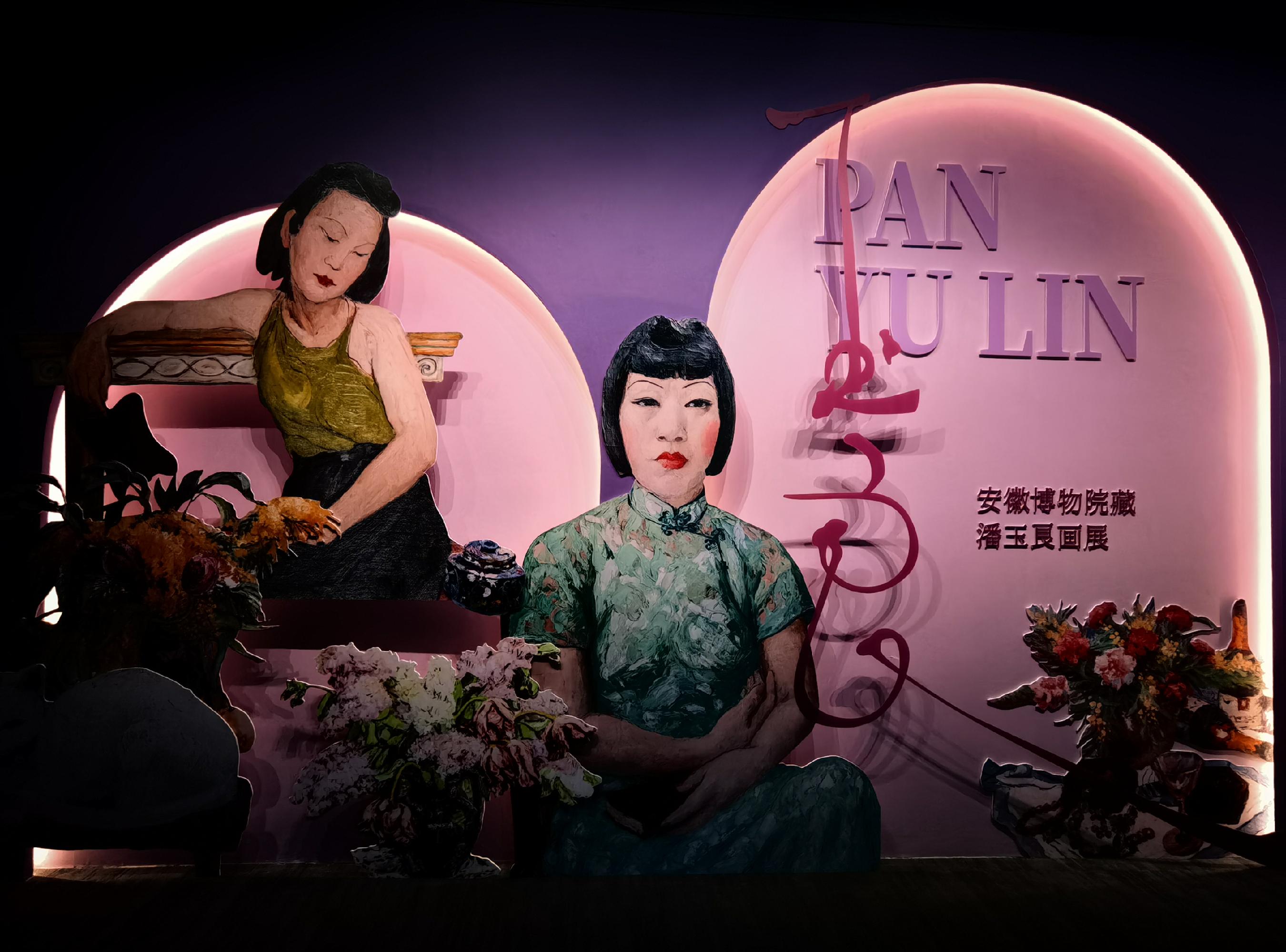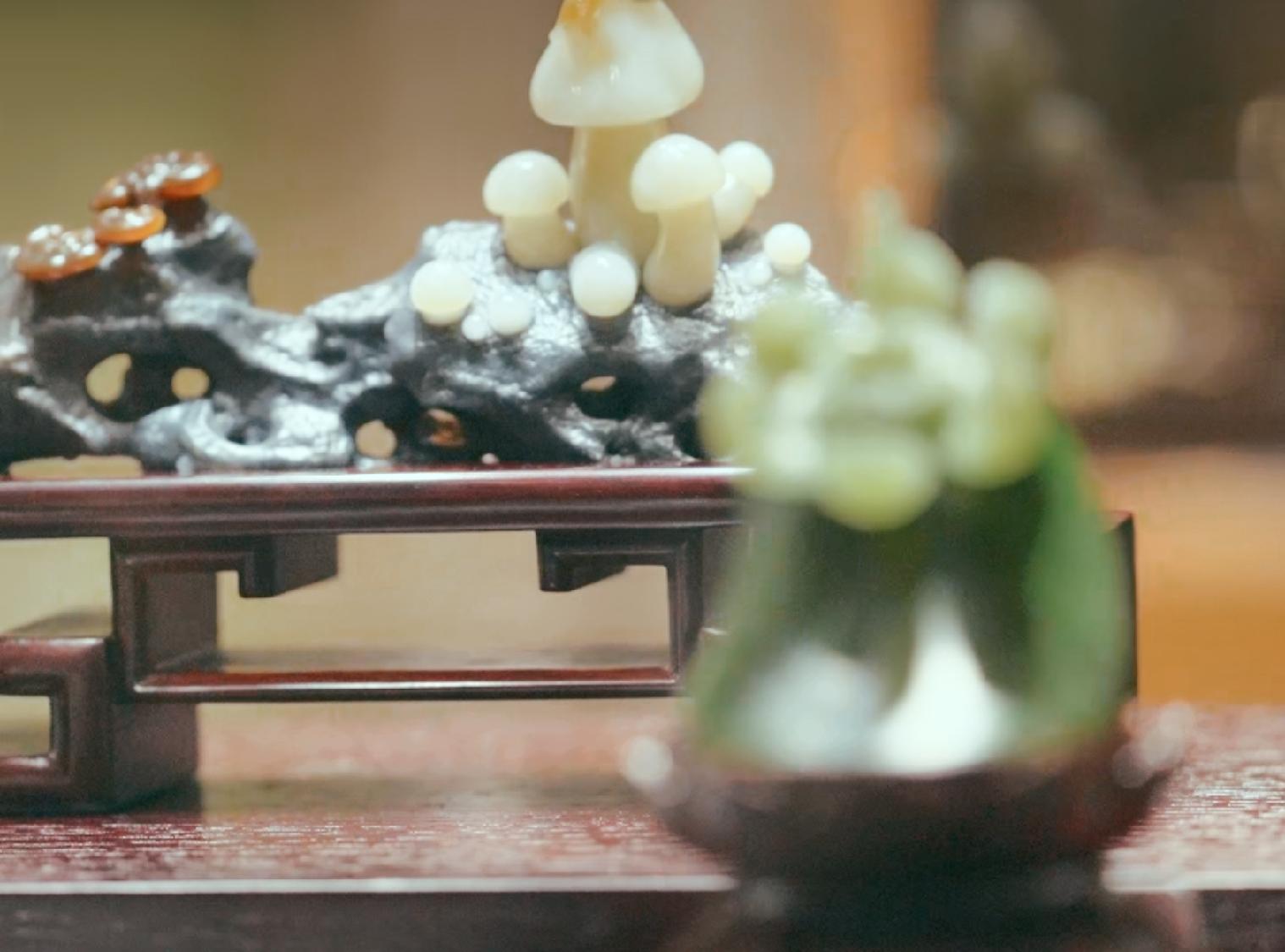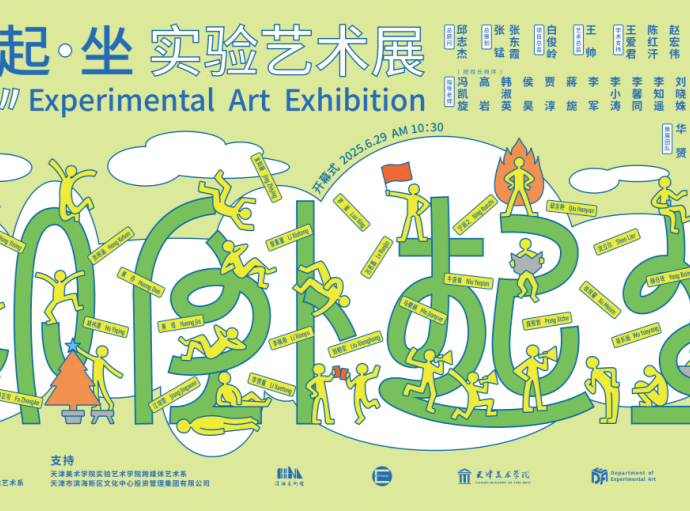Kolja Kärtner Sainz出生于1998年,现工作、学习于德国莱比锡。他毕业于莱比锡视觉艺术学院(HGB Leipzig),研读绘画与摄影。
在他的作品中能隐约感受到摄影的影响,即便是油画作品中也能看出艺术家敏锐的光感和空间感。Kärtner Sainz的作品中很少出现能让人一眼识别出来的物体,更多的艺术家希望能通过一些线索激发观者的想象、因此,他的作品中总是充满了朦胧感和不确定性,在具象与抽象之间徘徊。
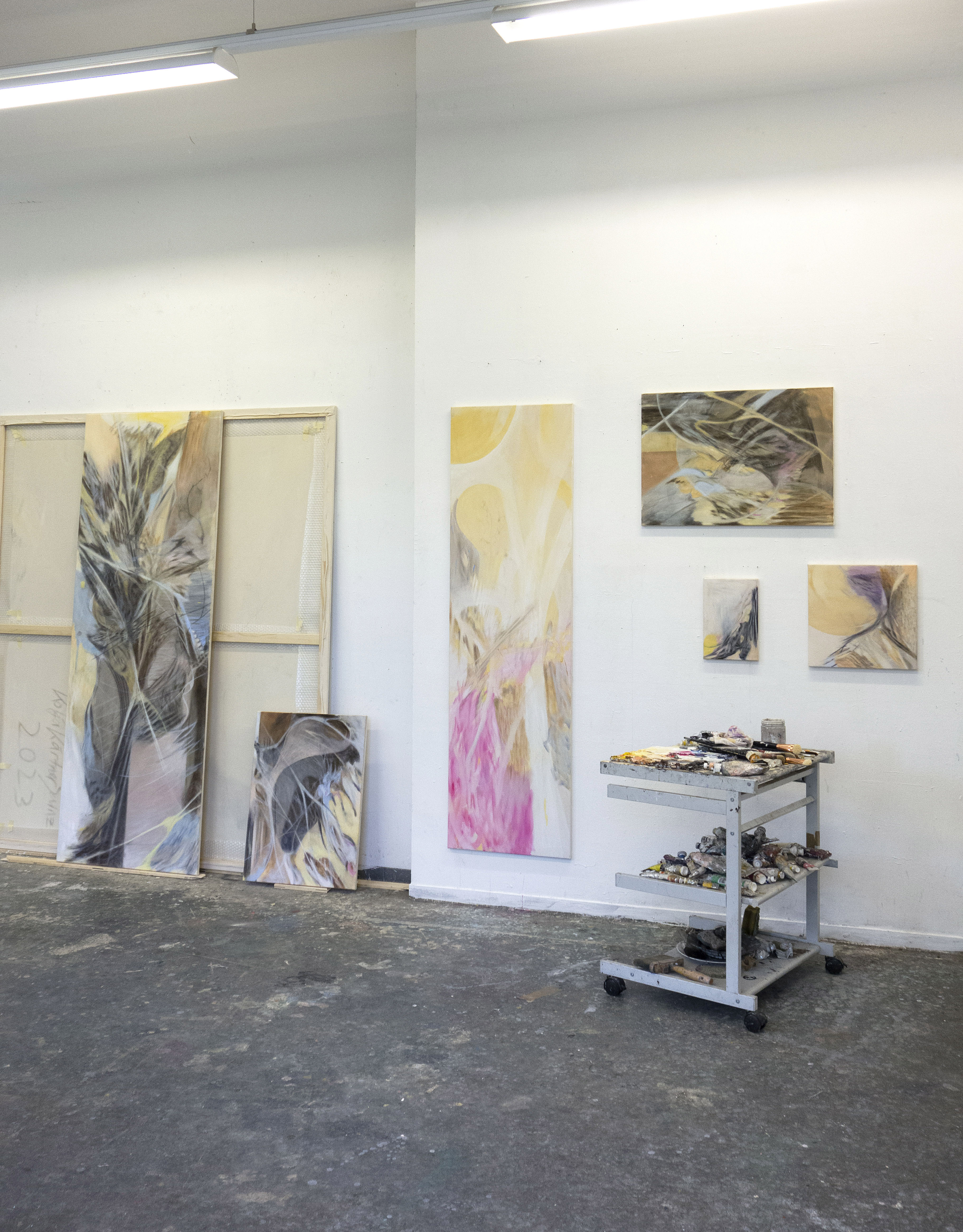
像许多画家一样,Kärtner Sainz不想过度解读自己的作品,他希望他的作品捕捉的是一种形式和理想的中间状态。“形式”、“理想”这两种形而上学概念对立在艺术家本人看来可以象征生活中一切的对立面,生命/死亡、自然/人工、有机/机械,这些对立的概念在他的作品中进行斗争后又被强行融合,形成新的景观。他的作品并不是一个僵化的瞬间,而是多股力量交织移动在永恒变化。
因此,Kärtner Sainz作品中刻意的模糊起到了重要的概念性作用,它破坏了当代艺术及其整个后现代文化所讨论的二元对立(dichotomy)。抽象与具象并非对立面,他们可以被模糊和混淆。无论是通过刻意模糊打破二元性的做法还是从Kärtner Sainz本人的摄影背景都不得不让人想起20世纪著名德国艺术家格哈德·里希特(Gerhard Richter)。Richter曾说过:模糊一切,使一切平等,一切都同等重要也同等不重要,当我们把这句话放进Kärtner Sainz作品的语境里也格外恰当。
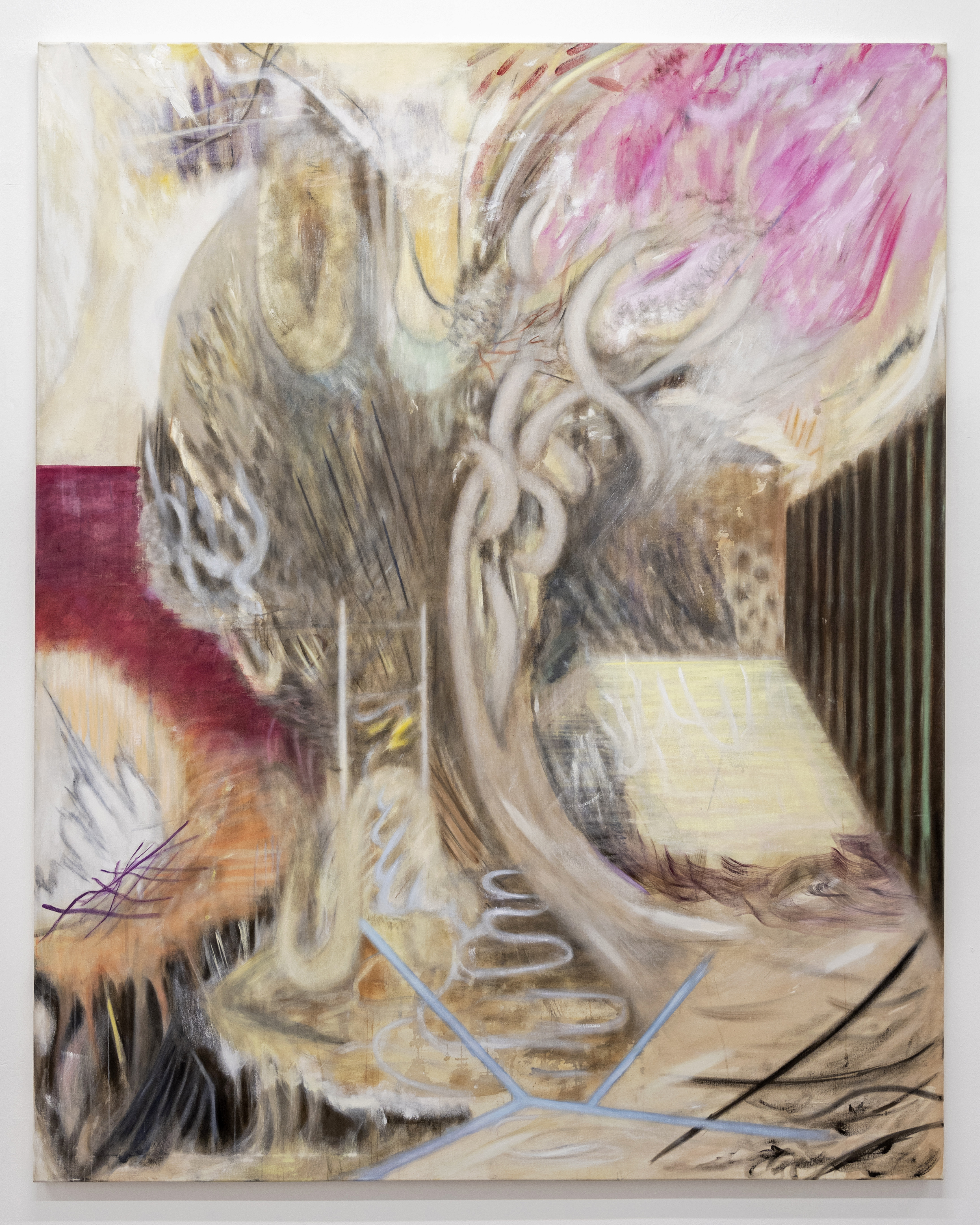
与Kärtner Sainz对谈 [访谈英文原文附于文章结尾]
- 你的作品在色调上相对统一,在色彩的选择方面,你使用了很多黄调、蓝调、灰调配合着一丝丝红调、这些颜色对你来说意味着什么?它们有什么特殊的象征意义吗?
- 颜色对我来说有很多不同的含义,并且有多种用途。 有时,某个单一颜色可以承担起主角的角色,它会在一系列作品中反复出现。 其他时候,这种单一颜色承担了叙述者的角色,嵌入并丰富了我画作中所描绘的内容。 我通常会将很多想法、记忆和观点与我的颜色选择联系起来,但我不想完全打破这些,以保持自己的开放。 最近对我来说很重要的是使用饱和度较低和一些更加柔和的颜色。最近在我们的图像文化中存在一种持续的过度饱和趋势,而我想要有意识的去抵制这种没有意义的通过饱和度来吸引注意的做法。
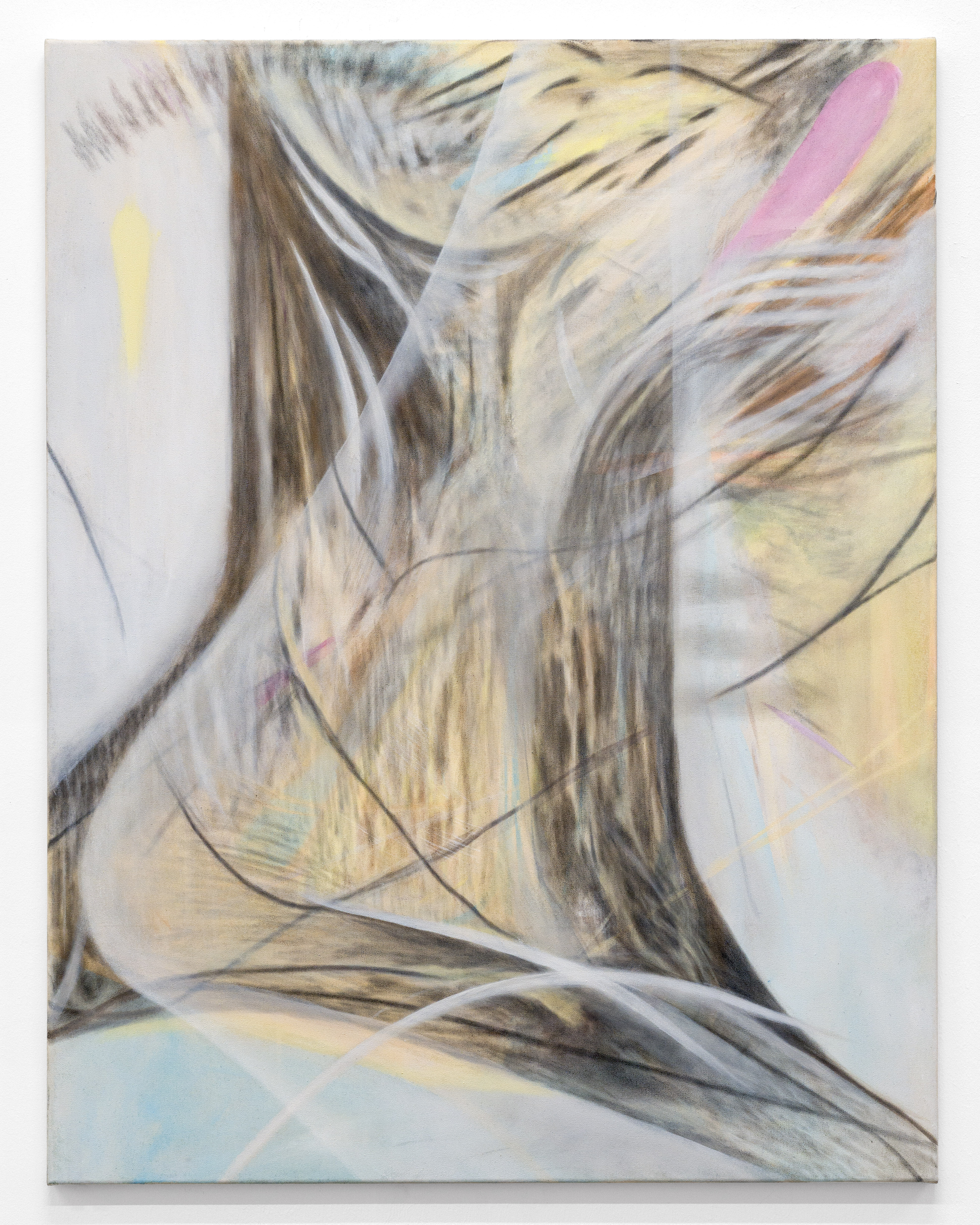
- 你能跟我们分享一下你的绘画过程吗,尤其是你如何确定一幅作品的构图。一幅作品的成型是经过精心策划还是纯粹是自发的? 你如何获得每幅作品的灵感?
- 构图方面,我纯粹以联想的方式工作,我个人是从来不做草稿的,而是直接在画布上开发图像。 我开始工作的方式非常自由,而且很少雷同。 很多时候我会同时开始多件作品,然后将它们分成不同的方向,最后构成两件或者多件作品一组的情况。 在介质方面,我主要使用高度稀释的油画颜料和墨水。 它们使我能够在画布上公开可见的纹理、图像决策和过程痕迹。
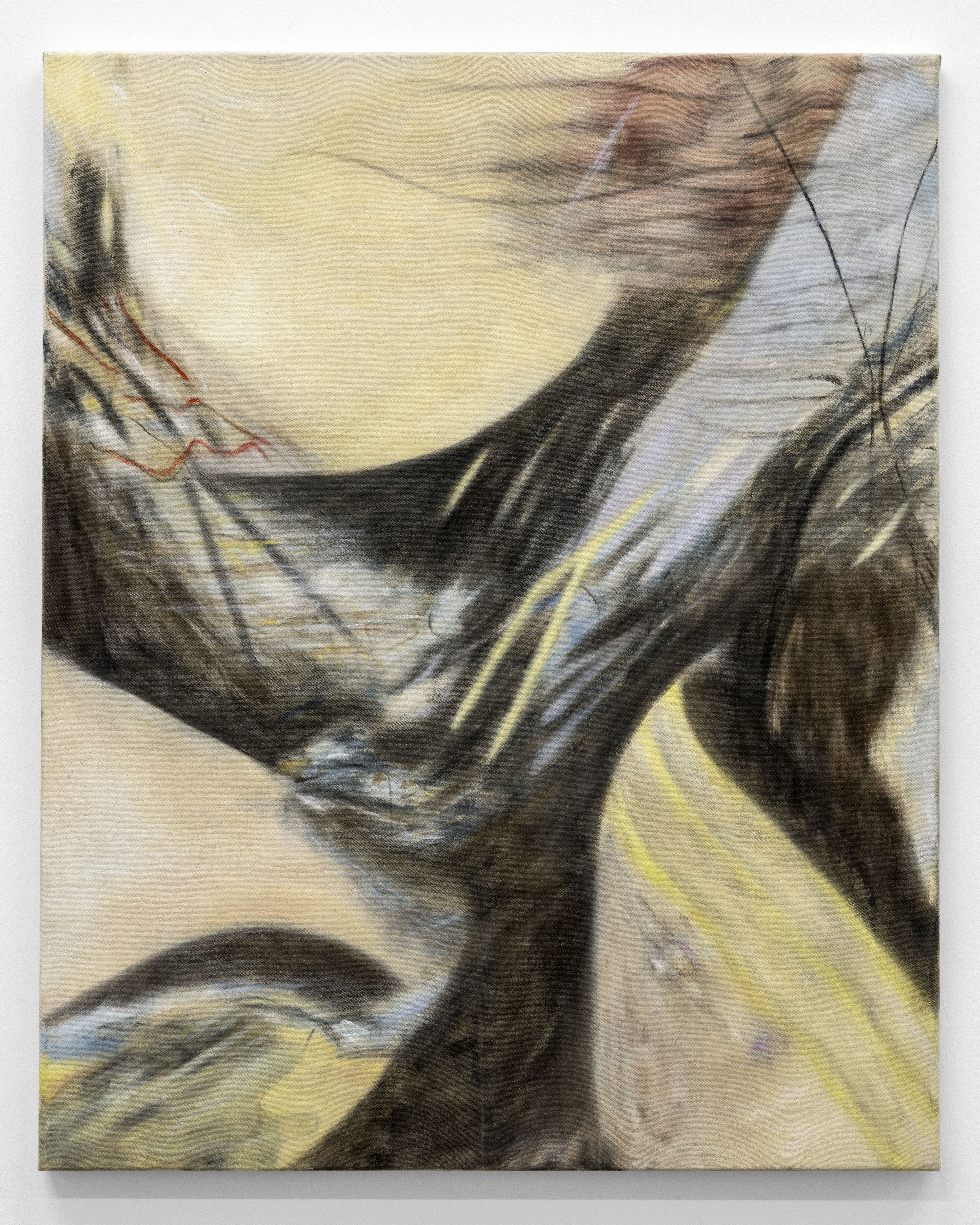
就灵感而言,很大一部分是从记忆和我观察到的东西中汲取的(可以是日常生活、自然电影、建筑、产品、YouTube 中的任何东西),但我灵感中最重要的部分来自于对同时代人和艺术家的艺术的观察。 历史地位不仅来自绘画,也来自其他媒介。 这让我想要回答并与我一直兴奋和思考的艺术家的作品进行交流。
到目前为止,我尝试不去依赖具象图像,我也不会在工作室存放任何图像材料,我尝试仅凭回忆绘制。通过视觉观察的那一刻是完全分开的,我从来不会在工作室里绘制草稿,我只是在那里画画(paint)。
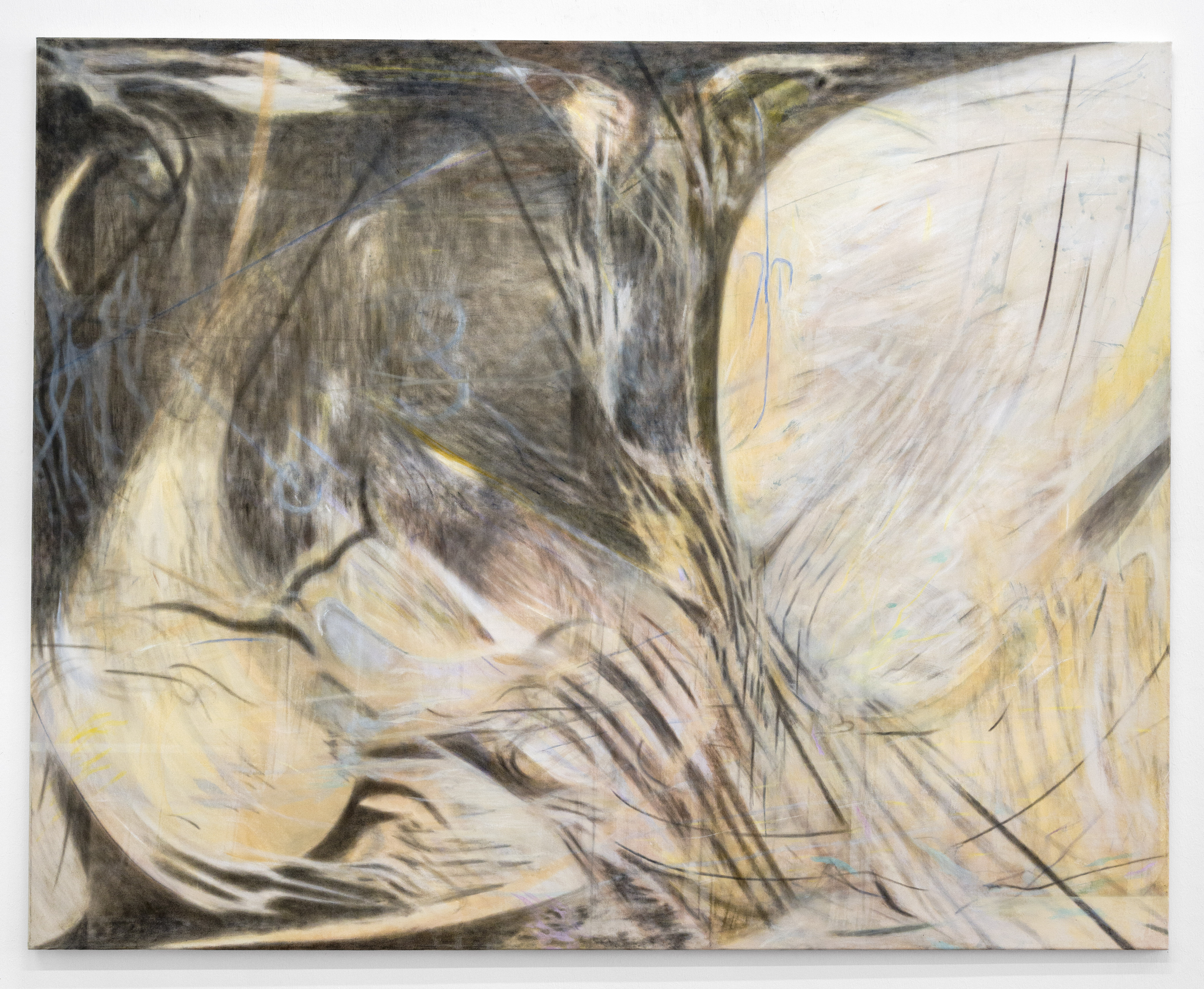
- 你想通过作品探索/表达的主要内容是什么? 你想给观众带来什么样的感受/情感?
- 我目前的作品是对“中间不同状态”的探索,我正在寻找一种理想——一种具象和抽象可以共存的中间状态。 在对这种交叉点的深入探索中,我试图自由地解释和感知自然与人工二者之间的转变和过度而并不将它们两者看作是僵化的两种状态,我想要捕捉到感知的模糊、过渡和变化。 这种介于两者之间的感觉是我希望通过打开可能性之窗并创造机会改变人们的看法来让观众接触到的东西之一。
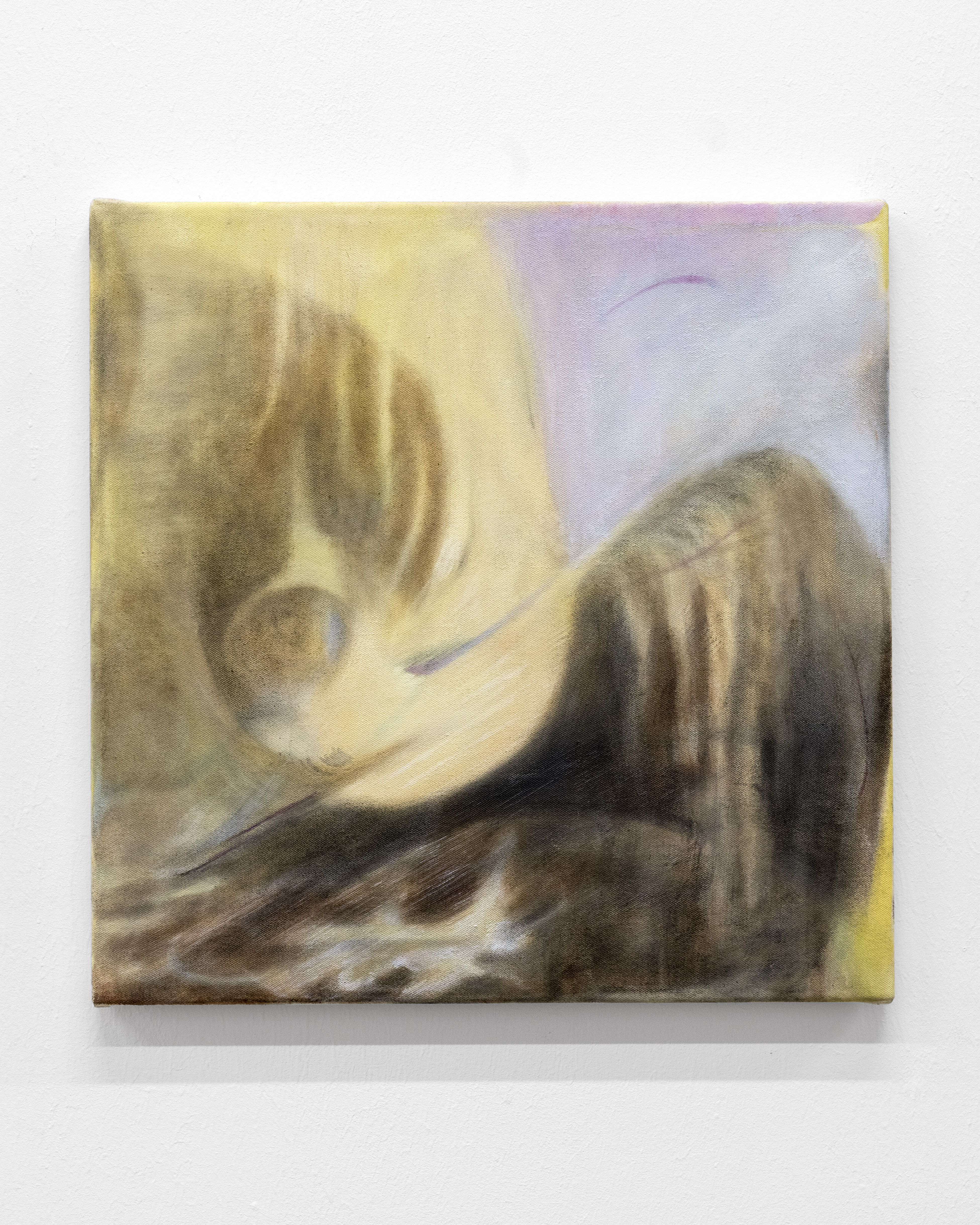
- 我认为你的作品在平衡抽象和具象方面做得非常出色。 我觉得你的画是如此充满活力,以至于我实际上可以感受到具象和抽象的两种力量在对抗并最终安定下来。 那么你如何平衡两者呢?或者说你认为它们存在一个平衡点吗?
- 我认为抽象和具象作为两种冲突力量的类比非常合适,实际上这个也是我当前工作的核心。 与其说是寻找一个平衡点,不如说是在两种极具诱惑力和对立的力量之间进行谈判和调解,以贯彻执行。 我不断需要将代表性结构融入图片中,同时也同样强烈需要再次压制它们。 在这个过程中,一股或另一股力量可能会在作品中占据上风,但对我来说,每幅画都标志着一种深入这种冲突并深入研究直到达到结论的新方式。 这也是让我有时候哪怕在工作的最后阶段也会对图像进行大幅改动的原因之一——无论是通过覆盖、旋转还是添加。
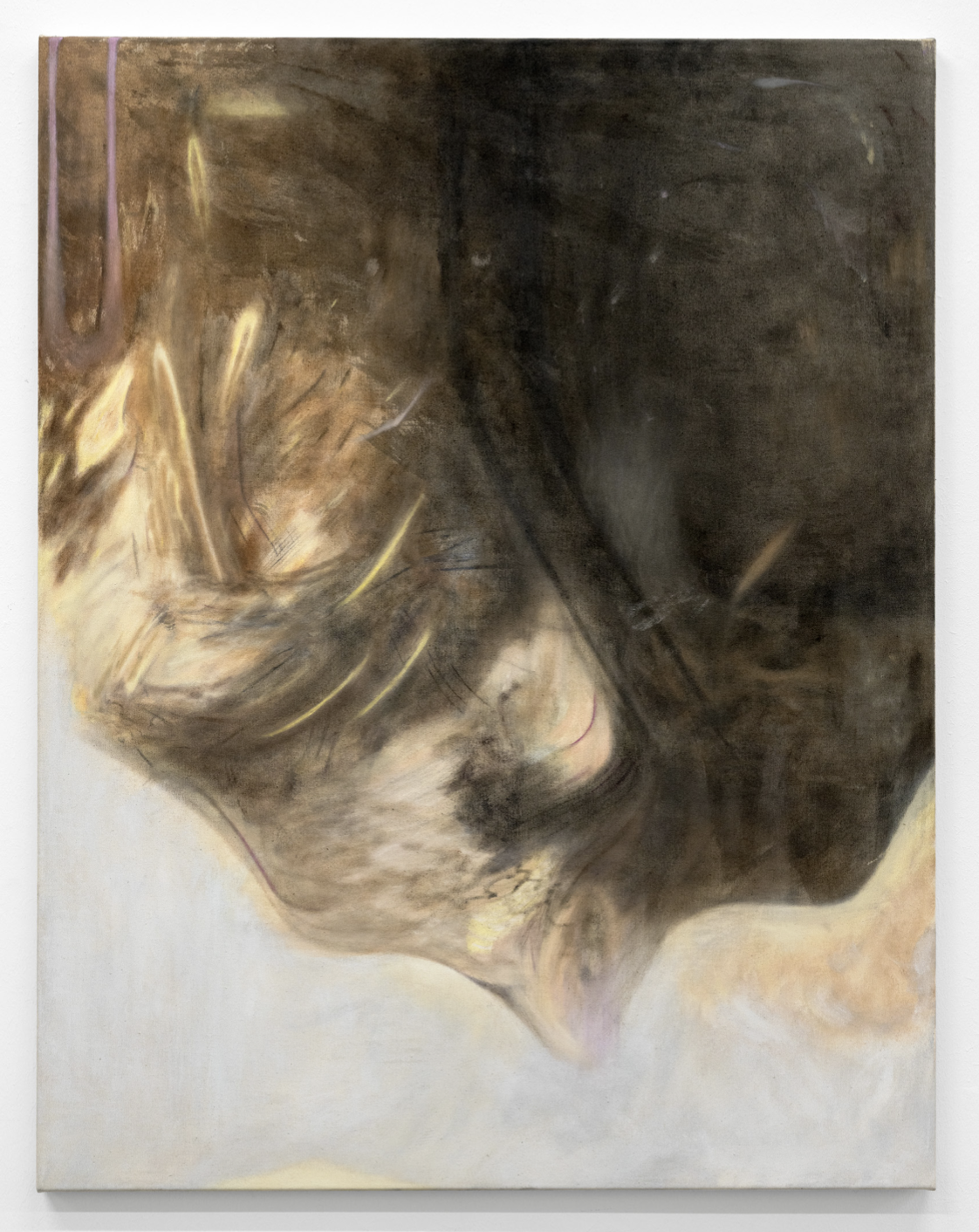
- 给我们分享一些展览讯息吧。
- 2023 年我会在Spencer Brownstone Gallery(纽约)Tabula Rasa画廊(北京); Reuter Bausch Gallery(卢森堡)举办群展。稍后也会在 DS Galerie(巴黎)举办个展。
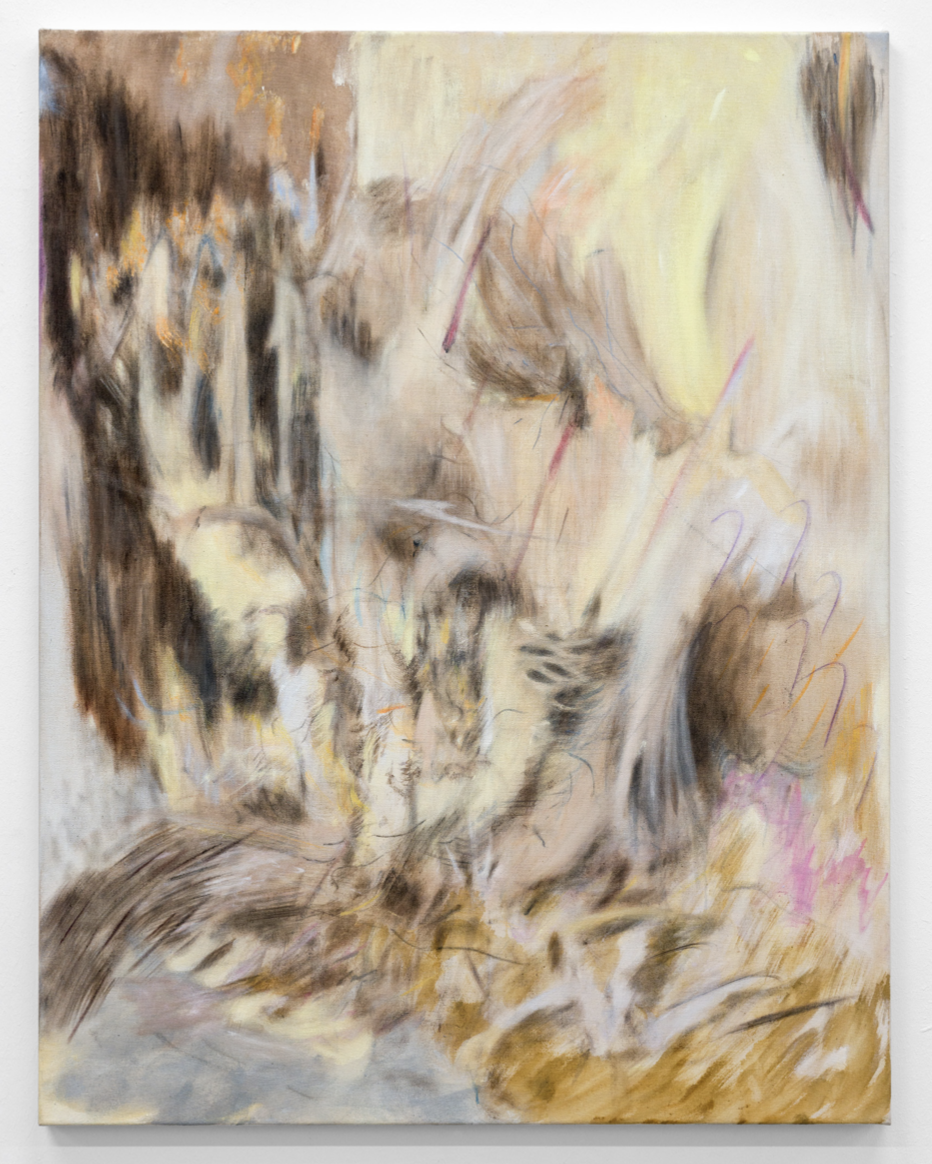
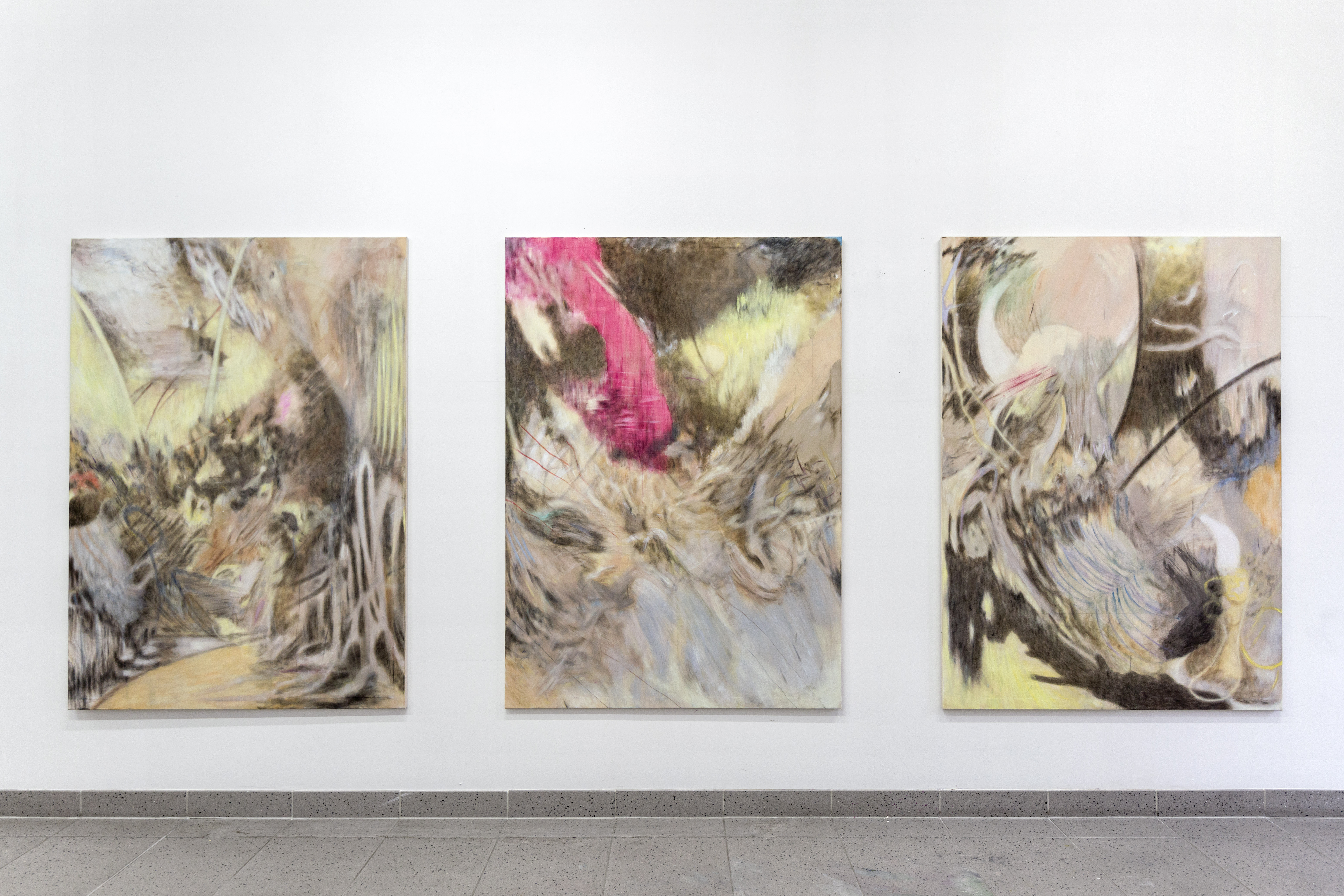
© Kolja Kärtner Sainz
以下为访谈英文原文:
- You have a relatively consistent colour palette in your body of work. I see many shades of yellow, blue, grey with a hint of red. What do these colours mean to you? Are they symbolic of anything particular?
- Colour has a lot of different meanings for me and serves a variety of purposes. Sometimes a single colour can take the role of a protagonist, reappearing throughout a series or body of work. Other times it is a narrator of sorts, embedding and enriching whats depicted in my paintings. I generally connect a lot of thoughts, memories and ideas to my colour choices but thats something I don't want to break down completely to keep myself open. Something that is important for me recently is the use of desaturated and muted colour- There is a long ongoing trend of over-saturation in image culture, including painting that i want to mildly work against or consciously work with.
- Can you tell us a little bit more about your painting process? I am particularly interested in how you decide on a composition. Does it involve careful planning or is it purely spontaneous? How do you get inspired?
- When it comes to composition i work purely associatively, without preliminary sketches and develop the images right on the canvas. The way i start a work is very free-flowing and rarely the same. Often times i will start multiple works at once but then work them into different directions, other times they end up as duos or set groups. In terms of media i mostly use heavily diluted oil paint and ink. They make it possible for me to leave textures, image decisions and traces of my process openly visible on the canvas.
In terms of inspiration a large part is to draw from memory and what i observe (that can be anything from daily life, nature movies, architecture, products, youtube) but the most essential part of my inspiration comes by looking at art from contemporaries and historic positions not only from painting but also from other media. It makes me want to answer and communicate with works of artists i am excited and thinking about all the time.
So far it has bin a rule of sorts to have no source or image material at hand in the studio and to only draw from memory. The moment of observation is completely separated, I don't even sketch or draw in the studio, i solely paint there.
- What would you say is the main thing you want to explore/express through your work? What feelings/emotions do you intend to bring to the viewers?
- My current works are an exploration of different states of in-between and i am seeking an ideal intermediate state where representation and abstraction can coexist. In the deep exploration of this intersection i try to freely interpret states of nature and the artificial and rather than rigid moments I capture blurs, transitions and changes in perception.
This sensation of in-between is one of the things that i want to make accessible to the viewer by opening windows of possibility and creating occasions to shift ones perception.
- Seeing your work, I think you have done such a great job balancing abstraction and figuration. I feel like your paintings are so dynamic that I can actually feel the two forces of figuration and abstraction combating and eventually settling down. So how do you balance the two? Do you think there is a balance point at all?
- I think the analogy of abstraction and figuration as two forces in conflict is quite fitting and actually central to my current work. It's less about finding an equal balance and more about negotiating and mediating between two very tempting and opposing forces to follow through with. My constant need to integrate representative structures into pictures and my equally strong need to suppress them again. One or the other may gain the upper hand in a work but for me each painting marks a new way of diving into this conflict and working deep into it until it reaches a state of conclusion. Its one of the motors that keeps me making very drastic changes in the image even until very late stages of the work - be it by covering, turning or adding.
- Can you tell us a bit more about your upcoming exhibitions?
- In 2023, among other Group shows, I will be exhibiting at Spencer Brownstone Gallery (New York); Tabula Rasa Gallery (Beijing); Reuter Bausch Gallery (Luxembourg) and have a Solo Show at DS Galerie (Paris).
作者:徐蕴慧,毕业于英国牛津大学艺术史系,艺术商及艺术顾问,发掘新锐艺术家,从事艺术批评及艺术市场等内容写作。
展开全文

